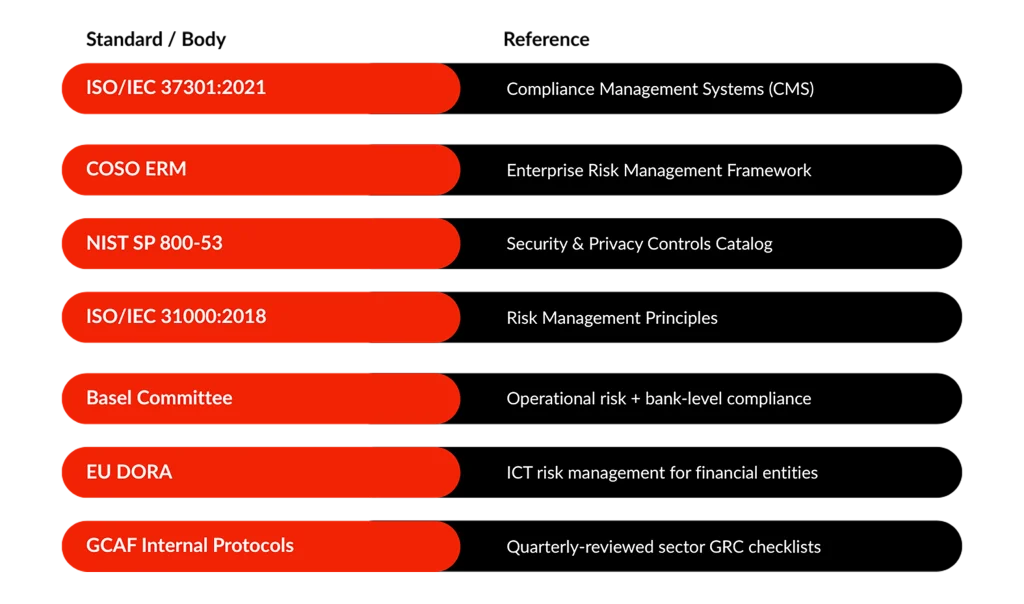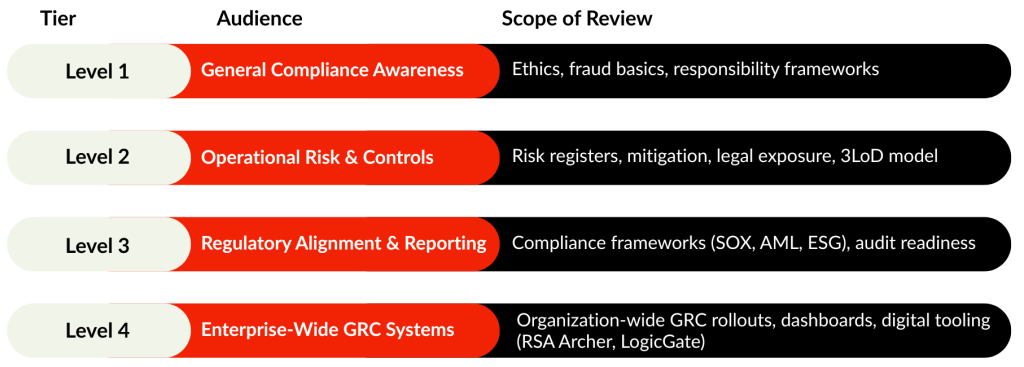Framework Details
- Frameworks
- Governance, Risk & Compliance (GRC) Framework

In an era where digital systems govern financial controls, public procurement, and cross-border regulation, Governance, Risk & Compliance (GRC) training and audit programs must be more than procedural. They must ensure system-level accountability, real-time visibility, and policy-to-execution alignment.
The GCAF GRC Framework sets the gold standard for accrediting entities that prepare professionals in internal audit, risk modeling, compliance reporting, and governance oversight — especially in high-risk or regulated sectors such as banking, health, public sector, and digital infrastructure.
Scope of Application
This framework applies to:
- Certification bodies offering internal audit, ethics, or enterprise risk programs
- Corporate training on enterprise GRC, ISO/ITGC frameworks, or public sector oversight
- Universities delivering compliance & regulatory affairs tracks
- Programs using or referencing:
- Control frameworks (e.g. COSO, COBIT, NIST 800-53)
- Anti-fraud and whistleblower governance
- Third-party risk management and digital GRC tools
- Regulatory frameworks (SOX, AML/CFT, DORA, Basel III)
Alignment & Reference Standards
Certification Categories under This Framework
Accreditation Criteria (Excerpt)
To be accredited under the GCAF GRC Framework, programs must demonstrate:
- Alignment with ISO 37301 or equivalent CMS model
- Clear delivery of policy-to-control-to-reporting workflow
- Risk scoring methodology with example application (e.g., heat maps, impact scoring)
- Regulatory mapping methodology (regional + international standards)
- Integration of governance themes like transparency, accountability, and whistleblower policies
- Third-party risk monitoring coverage (vendors, outsourcing, SaaS providers)
- Audit prep simulations or case-based compliance scenarios
- Multi-sector adaptation ability (e.g., finance, government, energy)
- Trainee assessment that includes both theoretical and applied GRC exercises
- Annual update policy with regulatory intelligence sources

